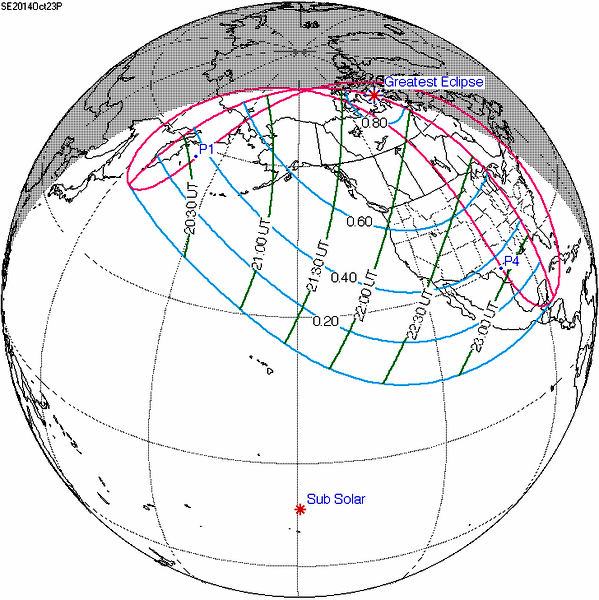A Month of Eclipses
This month we bid farewell to the constellation Scorpius and quite soon – Sagittarius. Both were the focal point of every star party this past summer. To witness the middle our home galaxy on a moonless night is beyond words. I hope you had the opportunity to see the beauty of the night and all it has to offer. But even though these two are sliding into the southwest skies, all is not lost. The summer triangle is still overhead and is prime for hunting the objects I wrote about the past two months.
We now look at a different constellation, Aquarius the Water Bearer. At a little less than 1,000 square degrees, Aquarius ranks 10th in area out of the 88 boundaries that make up the entire sky. Our feature constellation is home to a bit of everything including globular clusters, a planetary nebula, many galaxies and even a planet. Let’s start with the brightest celestial target which happens to be M2. This highly resolved magnitude 6.3 globular cluster also known as NGC 7089 is just at visual limits from dark sites. It lays 47,000 light-years away and is 175 light-years wide. Its population is around the 100,000 mark. To locate this gem, first, find the rightmost star of the asterism – its name is Sadalsuud and is 540 light-years from us. Then move almost five degrees north.
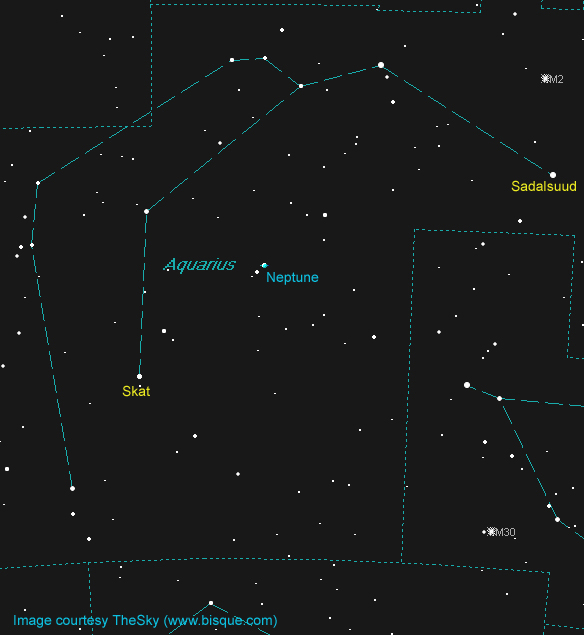
Next, we fish out the planetary nebula. From Sadalsuud move eight degrees southwest to magnitude 4.5 Nu Aquarii. This star is 164 light-years from us and a luminosity 42 times that of our Sun and a radii of 8.9 times. From here nudge your scope one and a third degrees west till you catch the Saturn Nebula. Catalogued as NGC 7009, its irregular shape takes on the appearance of our famous planet. With an estimated distance of 5,200 light-years, the central hot bluish dwarf star is still at 55,000 Kelvin. Close by are two other Messier objects namely M72 and M73. With values of 55,000 light-years from us and glowing at magnitude 9.3, M72 is considered on the faintest and smaller globulars in the Messier catalogue. M73 on the other hand only consists of four stars in a ‘Y’ pattern. Maybe Charles Messier thought he saw some nebulosity amongst these suns but none exist.
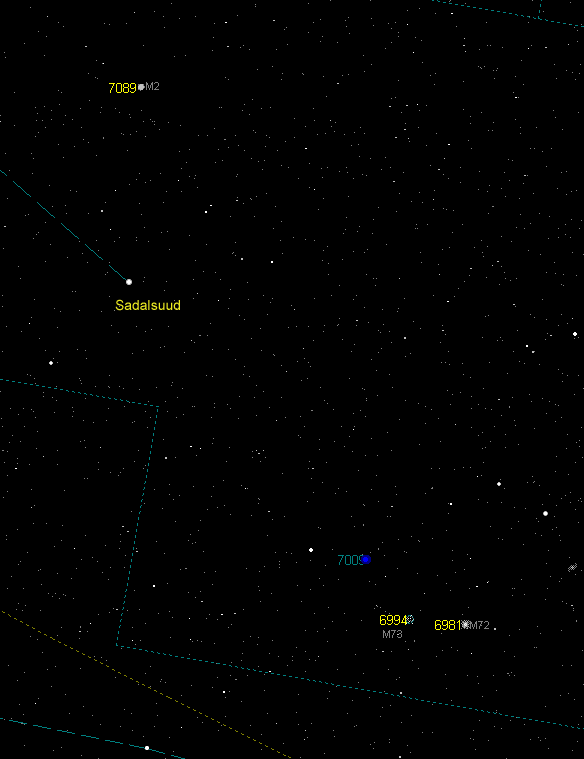
A challenge object would be NGC 7309. This is a low surface magnitude 12.9 galaxy and a strange-looking object as the galaxy possesses three distinct arms. The galaxy is presently not too far from the planet Neptune. It takes Neptune some 165 years to orbit once around the Sun, so this gas giant will be stuck in Aquarius until May of the year
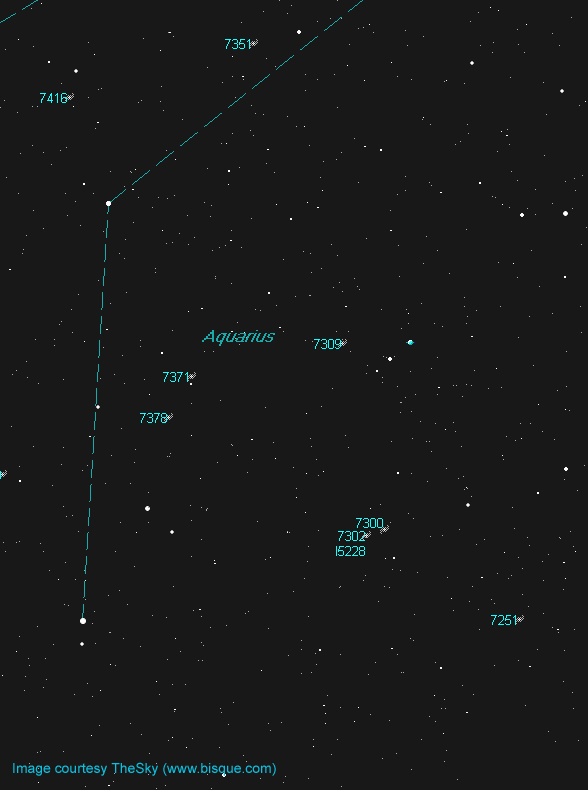
Eclipses only occur when the sun, moon and Earth line up. Because of variations in the Earth and moon’s orbit, this does not occur every month. But on occasion things line up and with that said we will be treated to a couple of eclipses – one lunar and the other solar. First, on the morning of October 8, the full Hunter’s Moon will slide into the Earth’s shadow. Eastern North American will see totality (darkest part) as the moon is setting in the west. Central and Mountain Time zones will witness most of the eclipse whereas the west coast is favoured to see it all. This is a very safe eclipse as the full moon turns a reddish-orange due to sunlight refracting through Earth’s atmosphere. In fact, if you were on the moon, you would see this reddish-orange ring around the Earth. The following is the time table for events – local time:
| Eclipse Event | EDT | CDT | MDT | PDT |
|---|---|---|---|---|
| Partial eclipse begins | 5:15 a.m. | 4:15 a.m. | 3:15 a.m. | 2:15 a.m. |
| Total eclipse begins | 6:25 a.m. | 5:25 a.m. | 4:25 a.m. | 3:25 a.m. |
| Mid-eclipse | 6:55 a.m. | 5:55 a.m. | 4:55 a.m. | 3:55 a.m. |
| Total eclipse ends | 7:24 a.m. | 6:24 a.m. | 5:24 a.m. | 4:24 a.m. |
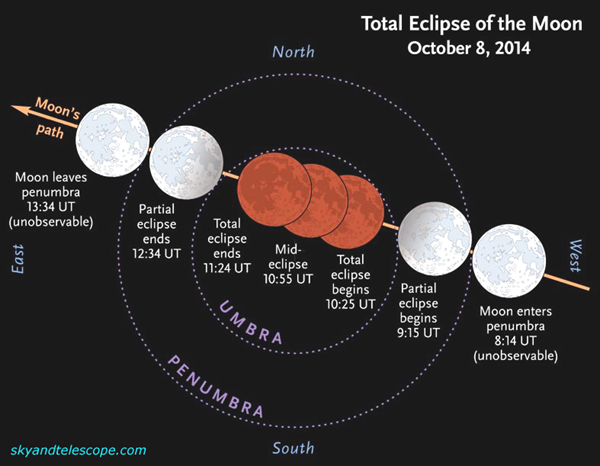
Two weeks later during new moon (lunation 1136) when the same three celestial bodies are still lined up to a certain point; we will witness a partial solar eclipse. Here is where the danger exists as special filters are essential to observe and photograph the event. NEVER LOOK AT THE SUN WITHOUT A FILTER. The bad news is the eclipse starts a few minutes before sunset for those in the east. Again, central and western parts of the continent will see more of the event.
Again this month for a two week period commencing October 20 you have the opportunity to observe the zodiacal lights in the eastern sky an hour before sunrise. It just so happens Jupiter is embedded in its faint glow. You will need country skies without moonlight. Our next moonset total eclipse will occur on April 4, 2015.
Until next month, clear skies everyone.
